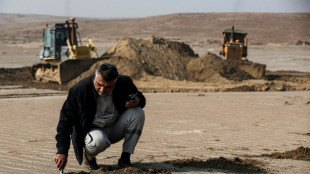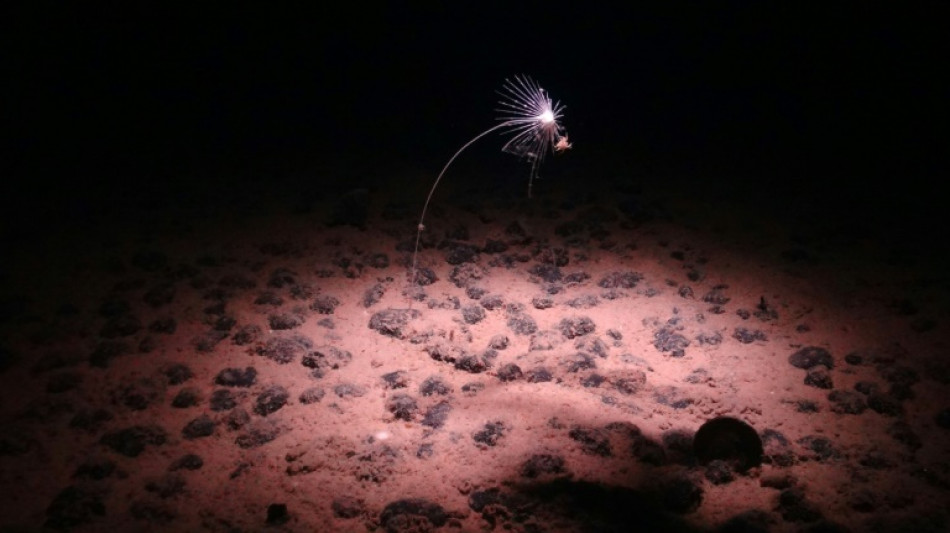
-
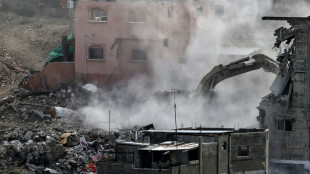 Israel begins demolishing 25 buildings in West Bank camp
Israel begins demolishing 25 buildings in West Bank camp
-
Cambodian soldiers freed by Thailand receive hero's welcome

-
 Sudan lose to Burkina Faso as Algeria win again at Cup of Nations
Sudan lose to Burkina Faso as Algeria win again at Cup of Nations
-
Man City's Rodri and Doku could return against Sunderland

-
 French minister criticises Clooney's 'double standard' passport
French minister criticises Clooney's 'double standard' passport
-
Ukrainians wish for peace in 2026 -- and no more power cuts

-
 Glasner coy over Palace pursuit of Spurs striker Johnson
Glasner coy over Palace pursuit of Spurs striker Johnson
-
Neville labels Man Utd's draw with Wolves 'baddest of the bad'

-
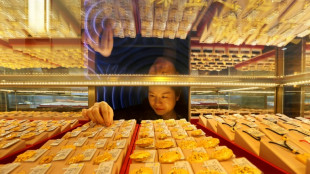 Stocks pull lower at end of record year for markets
Stocks pull lower at end of record year for markets
-
France plans social media ban for children under 15

-
 Mbappe suffers knee sprain in blow for Real Madrid
Mbappe suffers knee sprain in blow for Real Madrid
-
Putin wishes Russians victory in Ukraine in New Year speech

-
 Iran government building attacked as top prosecutor responds to protests
Iran government building attacked as top prosecutor responds to protests
-
World begins to welcome 2026 after a year of Trump, truces and turmoil

-
 Fofana reckons 'small details' restricting Chelsea's progress
Fofana reckons 'small details' restricting Chelsea's progress
-
Israel to ban 37 aid groups operating in Gaza

-
 Filmmaker Panahi says Iran protests 'to move history forward'
Filmmaker Panahi says Iran protests 'to move history forward'
-
Xi says China to hit 2025 growth target of 'around 5 percent'

-
 Turkey steps up anti-IS raids, arresting 125 suspects
Turkey steps up anti-IS raids, arresting 125 suspects
-
Arteta says Arsenal reaping rewards for 'sacrifices and commitment'

-
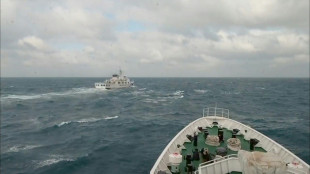 China says live-fire drills around Taiwan 'completed successfully'
China says live-fire drills around Taiwan 'completed successfully'
-
Nancy adamant he's still the man for Celtic job after Motherwell defeat

-
 Hoping for better year ahead, Gazans bid farewell to 'nightmare' of 2025
Hoping for better year ahead, Gazans bid farewell to 'nightmare' of 2025
-
Queen Camilla recalls fighting back against train attacker

-
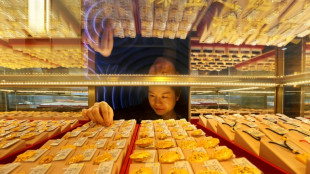 Stocks drop at end of record year for markets
Stocks drop at end of record year for markets
-
Amorim still 'really confident' about Man Utd potential despite Wolves draw

-
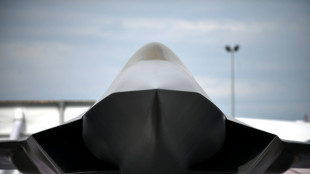 Berlin says decision postponed on European fighter jet
Berlin says decision postponed on European fighter jet
-
Iran prosecutor pledges 'decisive' response if protests destabilise country

-
 Emery defends failure to shake hands with Arteta after Villa loss to Arsenal
Emery defends failure to shake hands with Arteta after Villa loss to Arsenal
-
China says to impose extra 55% tariffs on some beef imports
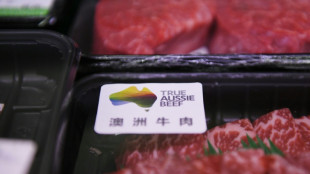
-
 Japanese women MPs want more seats, the porcelain kind
Japanese women MPs want more seats, the porcelain kind
-
Guinea junta chief Doumbouya elected president: election commission

-
 Pistons pound Lakers as James marks 41st birthday with loss
Pistons pound Lakers as James marks 41st birthday with loss
-
Taiwan coastguard says Chinese ships 'withdrawing' after drills
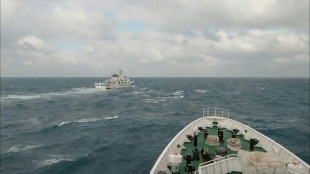
-
 France's homeless wrap up to survive at freezing year's end
France's homeless wrap up to survive at freezing year's end
-
Leftist Mamdani to take over as New York mayor under Trump shadow

-
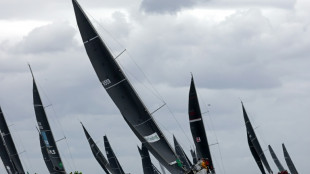 French duo stripped of Sydney-Hobart race overall win
French duo stripped of Sydney-Hobart race overall win
-
Thailand releases 18 Cambodian soldiers held since July

-
 Tiny tech, big AI power: what are 2-nanometre chips?
Tiny tech, big AI power: what are 2-nanometre chips?
-
Libyans savour shared heritage at reopened national museum

-
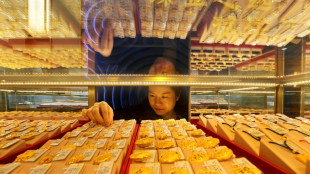 Asia markets mixed in final day of 2025 trading
Asia markets mixed in final day of 2025 trading
-
Global 'fragmentation' fuelling world's crises: UN refugee chief

-
 Difficult dance: Cambodian tradition under threat
Difficult dance: Cambodian tradition under threat
-
Regional temperature records broken across the world in 2025

-
 'Sincaraz' set to dominate as 2026 tennis season kicks off
'Sincaraz' set to dominate as 2026 tennis season kicks off
-
Bulgaria readies to adopt the euro, nearly 20 years after joining EU

-
 Trump v 'Obamacare': US health costs set to soar for millions in 2026
Trump v 'Obamacare': US health costs set to soar for millions in 2026
-
Isiah Whitlock Jr., 'The Wire' actor, dies at 71

-
 SoftBank lifts OpenAI stake to 11% with $41bln investment
SoftBank lifts OpenAI stake to 11% with $41bln investment
-
Bangladesh mourns ex-PM Khaleda Zia with state funeral

| SCS | 0.12% | 16.14 | $ | |
| RYCEF | 0.83% | 15.58 | $ | |
| RBGPF | 0.42% | 81.05 | $ | |
| CMSC | 0.36% | 22.765 | $ | |
| JRI | 0.22% | 13.61 | $ | |
| BCC | 0.34% | 74.04 | $ | |
| NGG | -0.4% | 77.46 | $ | |
| RIO | -0.6% | 80.04 | $ | |
| GSK | -0.42% | 49.095 | $ | |
| BTI | 0.24% | 56.685 | $ | |
| VOD | -0.08% | 13.22 | $ | |
| BCE | 1.03% | 23.815 | $ | |
| CMSD | -0.22% | 23.08 | $ | |
| RELX | -1.12% | 40.655 | $ | |
| AZN | -0.46% | 92.09 | $ | |
| BP | -0.13% | 34.705 | $ |

The battle over mining mineral-rich deep sea 'nodules'
They might look like pebbles strewn across the seafloor, but to the unique animals of the ocean deep, polymetallic nodules are a crucial habitat.
To the mining firms vying to extract them, on the other hand, they promise to be a "battery in a rock".
This month at a week-long meeting of the International Seabed Authority (ISA), those opposed to mining the nodules suffered a serious setback when they failed to take a first step toward an international moratorium on the controversial practice.
And on Tuesday a Nauru-backed company told AFP it would forge ahead with contentious plans to start industrial deep-sea mining in the Pacific in 2026, vowing to overcome environmental criticisms that have dogged the project.
The contract is for NORI (Nauru Ocean Resources Inc), a subsidiary of Canada's The Metals Company.
- Ancient -
Polymetallic nodules are most abundant in the Clarion-Clipperton Zone (CCZ) -- off the west coast of Mexico -- as well as in the central Indian Ocean and in the Peru Basin in the South Pacific, according to the ISA.
The nodules, found on the seafloor several kilometers below the surface, were probably formed over millions of years.
They likely started off as solid fragments -- perhaps a shark tooth -- that sank down to the soft muddy seabed, then grew slowly through the accumulation of minerals present in the water in extremely low concentrations.
Today, they reach up to 20 centimeters (nearly 8 inches) in size -- "metal pebbles", according to the French Research Institute for Exploitation of the Sea.
Adrian Glover, of Britain's Natural History Museum, thinks of them as like "potatoes" scattered on the seabed, roughly 15 to 20 kilograms (33 to 44 pounds) of them per square metre.
One of the reasons why the nodules have never been buried under the mud in the Pacific is because the sea is food poor, with fewer dead organisms drifting down to the depths.
The nodules were first recovered from the Pacific deep in the 1870s by the British Challenger expedition, which used thousands of meters of hemp rope, a steam-powered winch and plenty of manpower to dredge the westerly part of the CCZ.
"Straightaway they realised they were very interesting, it was actually one of the biggest discoveries of the voyage for them," said Glover.
But they were not considered to be a "resource", he added.
More than 30 countries have called for a moratorium on deep sea mining, including France, Canada, Chile, Brazil and the United Kingdom.
Adding to environmentalists' concerns is a new study, published last month, showing that these mineral-rich nodules that mining companies wish to harvest produce oxygen, which is vital for sealife.
- 'Clean' power? -
Multiple companies have lined up exploratory contracts and pursued tests for these nodules. One of these is NORI, whose contract covers four zones totalling some 75,000 square kilometers (about 30,000 square miles) in the CCZ.
These nodules are mainly composed of manganese and iron, but they also contain strategic minerals such as cobalt, nickel and copper.
According to the ISA, the CCZ contains around 21 billion metric tons of nodules, which could correspond to a reserve of six billion metric tons of manganese, 270 million metric tons of nickel and 44 million metric tons of cobalt, exceeding the known totals of these three minerals on land.
Advocates of undersea mining point to their potential use for green technology, particularly for electric vehicles.
"A battery in a rock," said The Metals Company.
"Polymetallic nodules are the cleanest path toward electric vehicles."
But that is an argument rejected by environmental NGOs and some scientists.
This claim is "more public relations than scientific fact", Michael Norton, of the European Academies' Science Advisory Council, told AFP, calling it "rather misleading" to say that demand cannot be met without undersea minerals.
- Impact fears -
Unlike the other two types of subsea mining resources regulated by the ISA -- including the mining of hydrothermal vents -- nodules do not require digging or cutting.
In tests carried out at the end of 2022, NORI lowered a collector vehicle to a depth of 4.3 kilometers (about 2.7 miles).
It swallowed nodules and sediment and then separated them, transporting the nodules to the surface vessel via a giant pipe and discharging the sediment into the water.
Catherine Weller, global policy director at the conservation organization Fauna & Flora, said that while the nodules are lying on the seafloor, they cannot just be "plucked" individually.
The impacts on the wider ocean system of churning up sediment and releasing wastewater was "simply unknown", she added.
Weller said the unique composition of the nodules which attracts mining firms is also what makes them such a special habitat for the creatures that live in the ocean depths.
M.Fischer--AMWN

